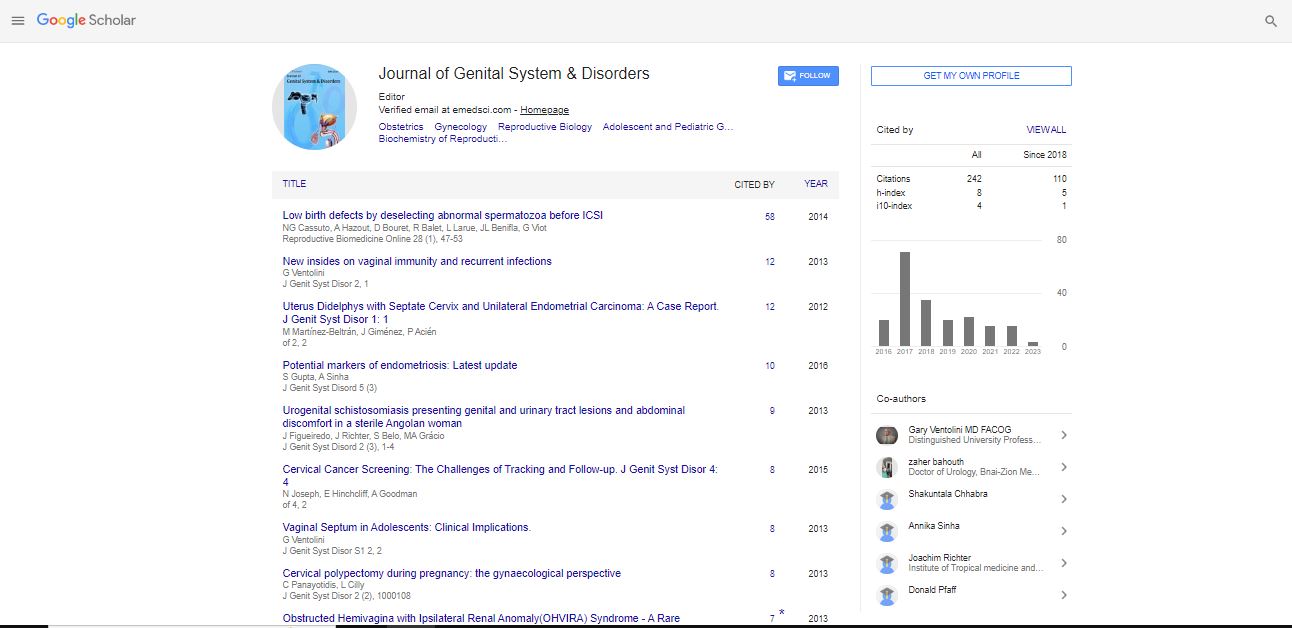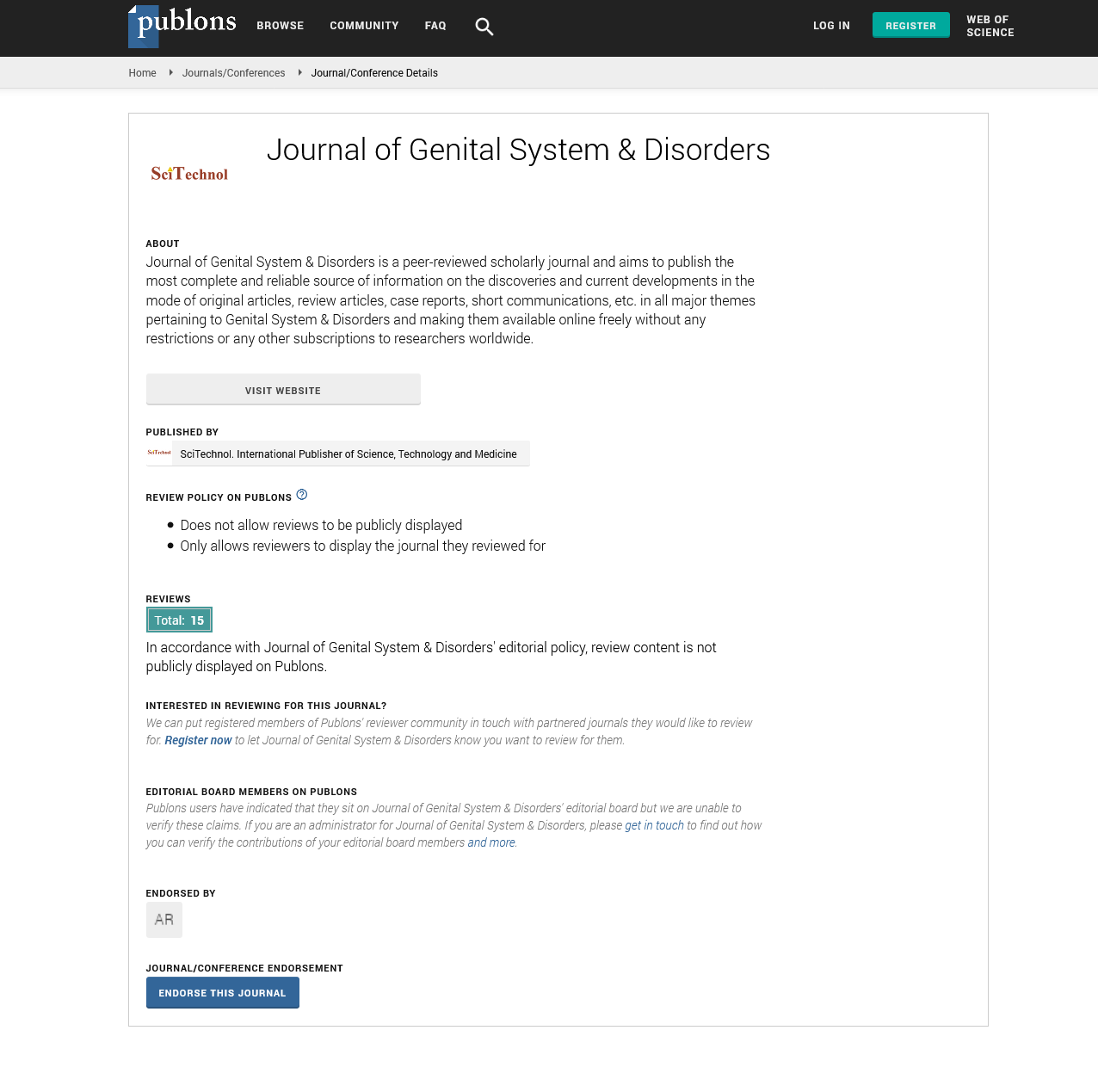Review Article, J Genit Syst Disor S Vol: 0 Issue: 2
Classification, Epidemiology and Therapies for Testicular Germ Cell Tumours
| Suleyman N1*, Moghul M1, Gowrie-Mohan S2, Lane T1 and Vasdev N1 | |
| 1Hertfordshire and South Bedfordshire Robotic Urological Cancer Centre, Department of Urology, Lister Hospital, Stevenage, UK | |
| 2Department of Anaesthetics, Lister Hospital, Stevenage, UK | |
| Corresponding author : Narin Suleyman
Narin Suleyman, MBBS, BSc, MRCS, Core Surgical Trainee (CT2), Hertfordshire and South Bedfordshire Robotic Urological Cancer Centre, Department of Urology, Lister Hospital, Stevenage, UK Tel: 01438284042 Fax:01438284134 E-mail: narin.suleyman@nhs.net |
|
| Received: February 09, 2016 Accepted: March 19, 2016 Published: March 25, 2016 | |
| Citation: Suleyman N, Moghul M, Gowrie-Mohan S, Lane T, Vasdev N (2016) Classification, Epidemiology and Therapies for Testicular Germ Cell Tumours. J Genit Syst Disor S2. doi:10.4172/2325-9728.S2-001 |
Abstract
Classification, Epidemiology and Therapies for Testicular Germ Cell Tumours
Testicular Germ Cell Tumours (TGCTs) have come to be well defined and managed, thanks to a number of international consortia and collaborations. The incidence of TGCTs continues to rise, with a growing number of risk factors which are discussed in this article. Genetic studies have also revealed specific markers that confer risk for TGCTs. We discuss the widely accepted treatment regimens as well as areas that novel therapies may target in the future.
Keywords: Testicular germ cell tumours; Testicular cancer; Genetic marker; Sperm abnormalities
Keywords |
|
| Testicular germ cell tumours; Testicular cancer; Genetic marker; Sperm abnormalities | |
Introduction |
|
| Testicular Germ Cell Tumours (TGCTs) have come to be well defined and managed, thanks to a number of international consortia and collaborations. | |
Classification |
|
| The 2015 European Association of Urology (EAU) guidelines [1] classify testicular germ cell tumours according to the 2004 World health organization (WHO) guidelines [2]. Sex cord/gonadal stromal tumours and miscellaneous non-specific stromal tumours will not be discussed in this article. | |
| Testicular germ cell tumours are derived from primordial germ cells [3]. | |
| Germ cell tumours | |
| • Intratubular germ cell neoplasia, unclassified type (Germ Cell Neoplasia In Situ (GCNIS) | |
| • Seminoma (including cases with syncytiotrophoblastic cells) | |
| • Spermatocytic seminoma (mention if there is sarcomatous component) | |
| • Embryonal carcinoma | |
| • Yolk sac tumour | |
| • Choriocarcinoma | |
| • Teratoma (mature, immature, with malignant component) | |
| • Tumours with more than one histological type (specify percentage of individual components) | |
| The revised World Health Organisation term for precursor lesions of invasive germ cell tumours is germ cell neoplasia in situ of the testis (GCNIS) [4]. TGCTs are now separated into those derived from GCNIS and those unrelated to GCNIS [4]. Spermatocytic seminoma has been designated as a spermatocytic tumour and placed within the group of non-GCNIS-related tumours in the updated classification [4]. | |
Epidemiology |
|
| The incidence of testicular cancer has been increasing in the last decades, especially in industrialized countries [5-7]. Testicular cancer now represents 1% of male malignancies and 5% of urological tumours [8,9]. In 90-95% of cases, the histology is germ cell tumour [8], with bilateral disease in 1- 2%. Non-seminomas have a peak incidence in the third decade, and seminomas peak in the fourth decade [1]. | |
| A specific genetic marker has been described in all histological types of TCGTs; an isochromosome of the short arm of chromosome 12 – i(12p) [10]. In addition, a deregulation in the pluripotent program of foetal germ cells is likely responsible for the development of TCGTs [1]. There is overlap in the development of seminoma and embryonal carcinoma, demonstrated by genome-wide expression analysis and the detection of alpha-fetoprotein mRNA in some atypical seminoma [11,12]. | |
| Risk factors for testicular tumours are components of the testicular dysgenesis syndrome [1]. These include cryptorchidism, hypospadias and sub- or infertility indicating decreased spermatogenesis [12]. The risk of testicular cancer in the undescended testicle increases by 4-13 times [12], with up to 10% of all testicular tumours arising from an undescended testicle [13,14]. | |
| Additional risk factors include history of testicular tumour in a first-degree relative, which increases risk by up to eight times [15], and the presence of contralateral tumour or testicular intraepithelial neoplasia (TIN). Extremes of height seem to influence risk, with tall men at a higher risk of TGCTs and short stature protecting against it [16]. Exposure to diethylstilboestrol (oestrogen) in utero confers a relative risk of up to 5.3% for testicular cancer [17] Additional risk factors such as Marijuana exposure, vasectomy, trauma, mumps and Human Immunodeficiency Virus (HIV) continue to be evaluated [18]. | |
Therapies |
|
| Radical orchidectomy | |
| A radical inguinal orchidectomy must be performed urgently, generally within one week. An exception to this is the presence of widespread testicular metastases on chest X-ray. This is an oncological emergency and immediate chemotherapy may be indicated before radical orchidectomy [1]. Consideration must be given as to whether the contralateral side must be biopsied. Men aged under 40 with a contralateral testis volume of less than 12ml are at 34% risk of Intratubular germ-call neoplasia (ITGCN) on biopsy [19]. Risk factors for ITGCN also include a normal volume undescended testis and subfertility, therefore biopsy should also be considered [19]. | |
| Adjuvant therapies for TGCT | |
| The requirement for further therapy after radical orchidectomy depends on the clinical and pathological staging of the malignancy. The American Joint Committee on Cancer (AJCC) staging classification is used primarily in the UK, as summarized in Table 1 [1]. | |
| Table 1: AJCC stage groupings as compared to TNM classification (T= primary tumour, N= lymph nodes, M = distant metastasis, S = serum tumour markers). | |
| Stage I TGCTs | |
| • Seminomas | |
| Options for seminoma are surveillance, one cycle of adjuvant carboplatin chemotherapy or adjuvant irradiation of the paraortic lymphatics (1). Of the patients who opt for surveillance, up to 20% will relapse, with relapse rates of 4% in those having either chemotherapy or radiotherapy [20]. Treatment options after local relapse are either radiotherapy or Bleomycin, Etoposide and Cisplatin (BEP) chemotherapy [1]. The only option following systemic relapse is BEP chemotherapy [1]. | |
| • Non-seminomatous TCGTs | |
| Risk of non-seminomatous TCGT is stratified according to whether vascular invasion or not. Treatment options include surveillance, adjuvant chemotherapy with two cycles of BEP chemotherapy or nerve sparing retroperitoneal lymph node dissection (RPLND [1]). The patient should be counseled bearing in mind that vascular invasion is the most important prognostic factor for distant relapse [1]. Independent of vascular invasion, all non-seminomatous TCGTs are associated with a 30% relapse rate with surveillance alone, after radical orchidectomy alone [20]. | |
| Metastatic TGCTs: The treatment of metastatic disease is based on the International Germ Cell Cancer Collaborative Group (IGCCCG) prognostic classification [21]. | |
| • IIA/B Seminoma | |
| The usual therapeutic option is chemotherapy, either three cycles of BEP or four cycles of Etoposide and Cisplatin (EP) only. Radiotherapy is occasionally an option [22]. | |
| • IIA/B Non-seminomatous TCGTs | |
| Patients who are classified in the good prognosis group [20] can be offered three cycles of BEP chemotherapy, extending treatment to four cycles in the intermediate and poor prognosis groups [20]. Subsequently, if there is residual mass, RPLND is performed, with salvage chemotherapy if the histology is positive [22]. | |
| • Stages IIC and III | |
| Patients with a good prognosis [21] are offered three cycles of BEP, which is extended to four cycles in the intermediate prognosis group [21,22]. The recommendation [21] is that poor prognosis patients are enrolled in trials and receive either four cycles of BEP or Cisplastin, Etoposide and Ifosfamide (PEI/VIP) chemotherapy [22]. | |
Novel Therapeutic Targets |
|
| It has been postulated that TGCTs begin as intratubular germ cell neoplasia unclassified (IGCNU), which is a product of suppressed apoptosis, increased proliferation and accumulation of mutation in gonocytes [23]. Invasive TGCTs show gain of chromosome 12p and single gene mutations are uncommon [23]. Different histologic subtypes have different gene expression profiles, likely due to epigenetic regulation [23]. Resistance to chemotherapy has been linked to karyotype aberrations, single-gene mutations and epigenetic regulation of gene expression [23]. | |
| The discovery of novel biomarkers will aid further discrimination between histological subgroups of TGCTs and are potential targets for novel treatments for this malignancy [24]. Genome-wide association studies have also implicated gene loci that predispose to development of TGCTs [3]. The functions of the proteins encoded by these genes go some way to explain the development and dissemination of TGCTs and thus have clinical relevance for management of these tumours [3]. | |
References |
|
|
|
 Spanish
Spanish  Chinese
Chinese  Russian
Russian  German
German  French
French  Japanese
Japanese  Portuguese
Portuguese  Hindi
Hindi 
